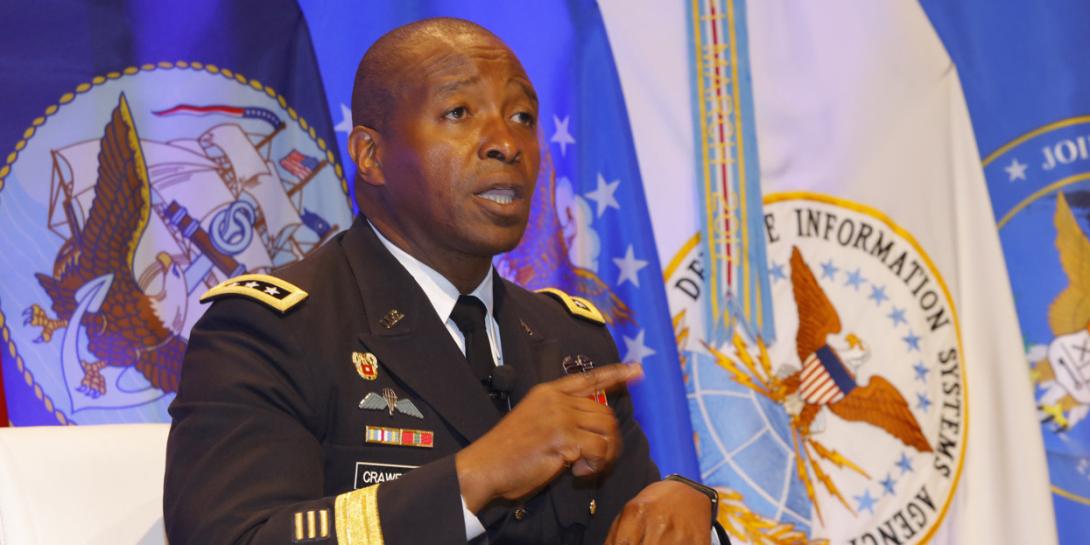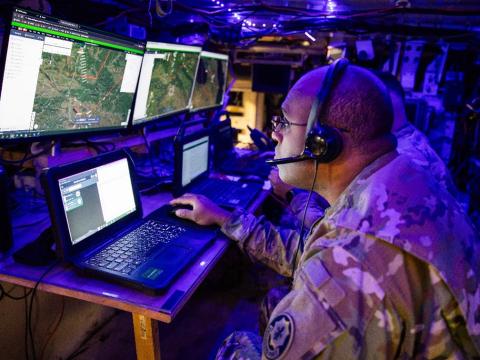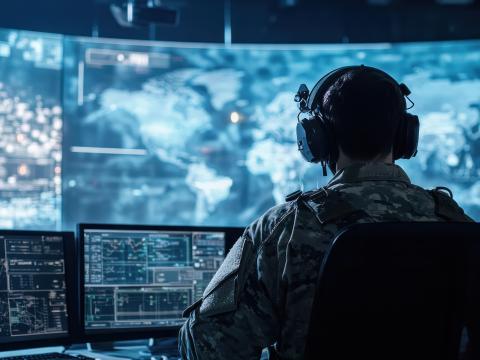Army CIO Envisions Internet of Strategic Things
"I think what’s on the horizon is more of a discussion of the Internet of Strategic Things,” said Lt. Gen. Bruce Crawford, USA, Army CIO/G-6.
Lt. Gen. Bruce Crawford, USA, chief information officer/G-6, U.S. Army, suggests the possibility of an Internet of Strategic Things in addition to the Internet of Tactical Things.
“We’ve had some really good discussions about the Internet of Things. That was a thing a couple of years ago. And then we started talking about the Internet of Tactical Things. I think what’s on the horizon is more of a discussion of the Internet of Strategic Things,” Gen. Crawford told the audience on the second day of the AFCEA TechNet Cyber 2019 conference in Baltimore.
He added that the discussion is a result of legislation in recent years requiring a greater focus on cybersecurity, especially for military weapon systems. His fireside chat focused in part on Army critical infrastructure issues.
Gen. Crawford indicated fifth-generation networking, commonly referred to as 5G, will be much more than just “bigger, faster 4G. “We’ve had some really good conversations inside the Army about what we think our needs are,” he reported, adding that “5G has the potential to become its own critical infrastructure.”
In order for the Army, the world’s third-largest and most complex organization of any kind, to properly leverage 5G, the service needs industry to develop technologies, such as software-defined antennas, that will allow the service to rapidly integrate the next-generation networking technologies onto all of its platforms, he suggested.
The general also stressed the need for the Army to access nontraditional technical talent within industry. “We really, really, really need access to [industry’s] talent. There are two pieces to this. It’s the traditional technical talent that we know. It’s [also] data scientists, software developers, engineers,” he said.
The nontraditional expertise includes a capability Gen. Crawford described as cloud-smart contracting. He described developing a cloud-smart contracting capability as a monumental task. “The Army’s about to stand up its cloud management office to interface with DOD and oversee all cloud actions inside the Army. One of the gaps we’re seeing is cloud-smart contracting,” the CIO said. “We’re going to have a very similar conversation with AI. We’ll have a similar conversation about 5G and so on and so forth. All great endings start probably with a really good dialogue.”
Within the next two months, the Army should be releasing a data strategy, he reported. The service can both aggressively defend its networks and defend its data, whether that data is at rest, in transit or being used, he suggested. “Our data’s got to be interoperable. It’s also got to be protected”
The so-called data problem is one of the service’s biggest challenges, Gen. Crawford noted. “It’s bigger than cloud. It’s bigger than the cybersecurity discussion. We probably should be thinking more of an open data environment … how we’re going to protect the data.”
He described the open data initiative as “our moonshot against the data problem. “The approach needs to be more about a broader, open data initiative,” he said.
He also reported progress on the Army’s consolidation of its various battle command systems, which include systems for aircraft and for friendly and enemy forces, into one common operating picture, an effort that has been going on for about two years. “It takes these 16 disparate battle command systems … and it collapses them onto three environments—a command post environment, a handheld environment and a mobile environment. Think about all the servers that will go away. Think of all the infrastructure we can divest of over time.”
He also pointed out the service is making a “fundamental change in philosophy” and is shifting a technology insertion concept for its networks rather than a “monolithic, legacy program of record,” which he said will allow the Army to better keep up with cutting-edge technologies.





Comment
I am so glad to learn about
I am so glad to learn about Lt. Gen. Crawford's commitment to Greater Security Of our Nation's Critical Infrastructure. Please Keep Us Informed About All Updates On This Monumentally Important Topic.I am now working with Educators And Enlightened Healthcare Professionals throughout California To Support A Comprehensive Commitment To Securing Embedded Sensor Networks In Healthcare Naionwide..To This End We Are Developing A Series Of Educational Documentaries....Would love to Share our Progress With Lt. Gen. Crawford!!
Comments